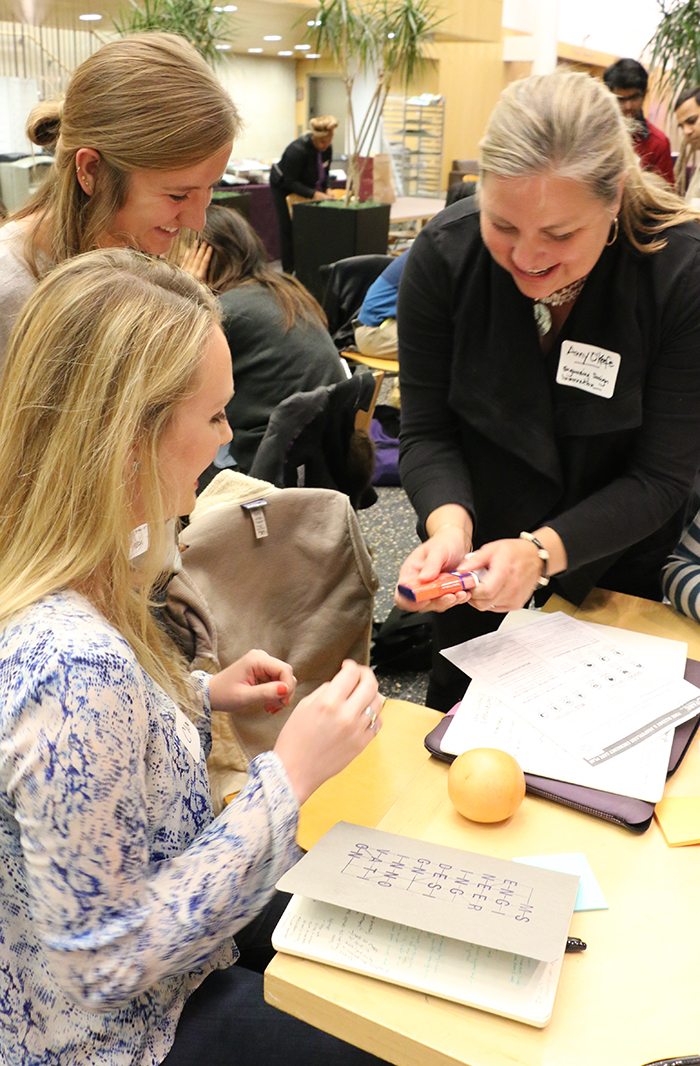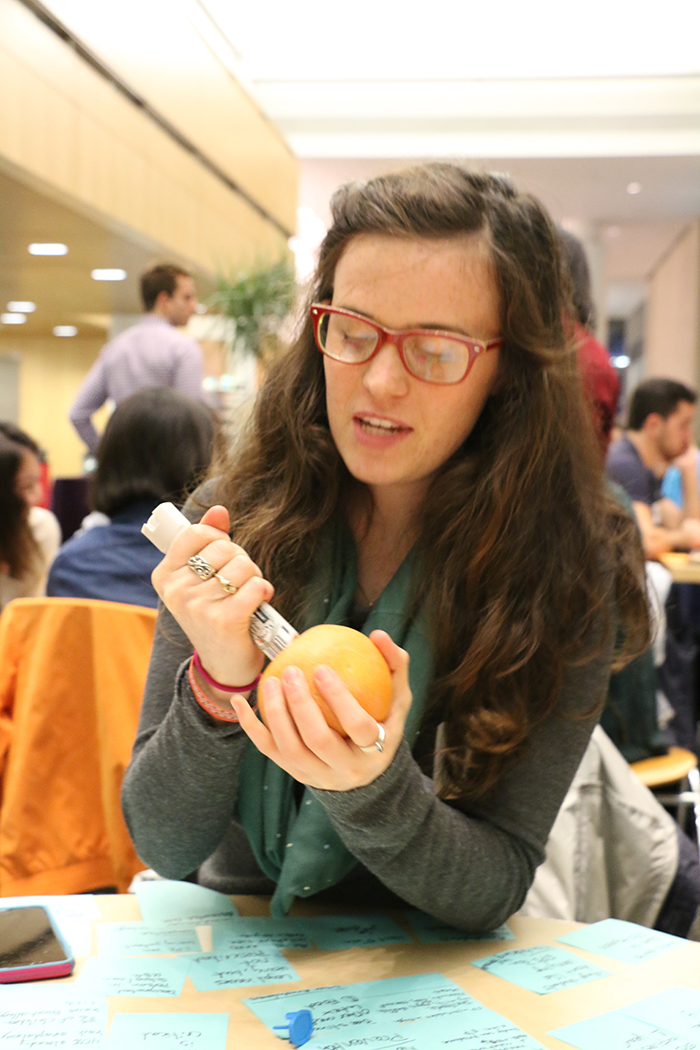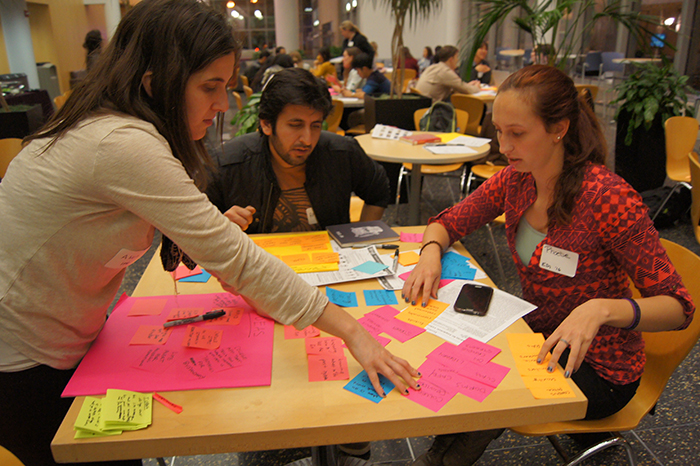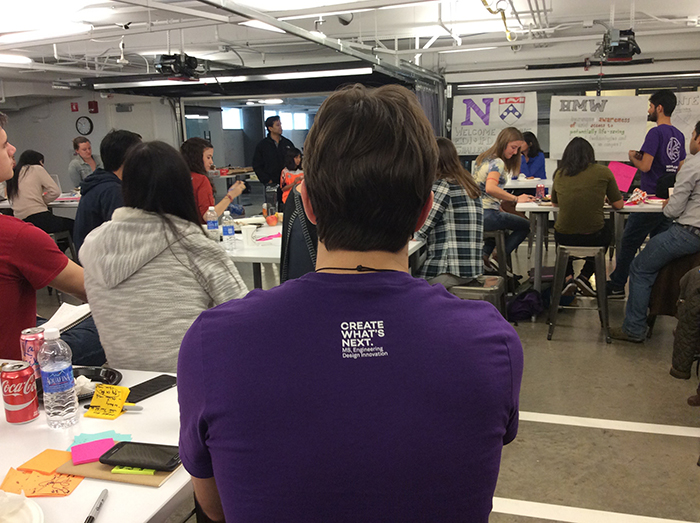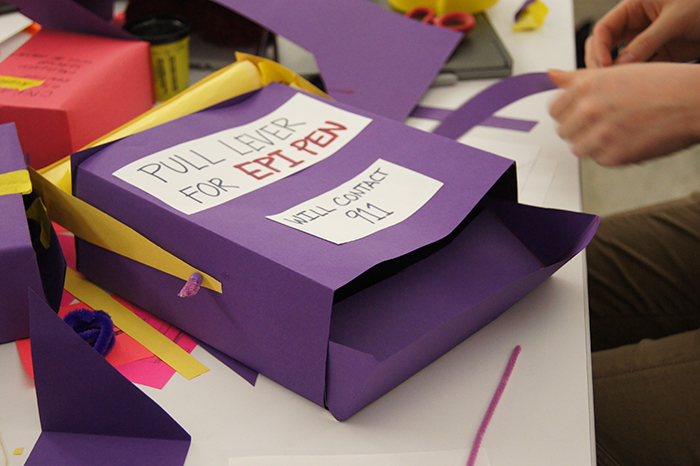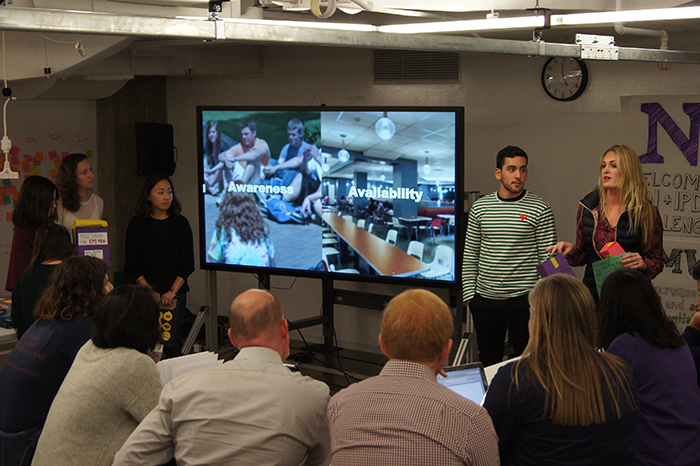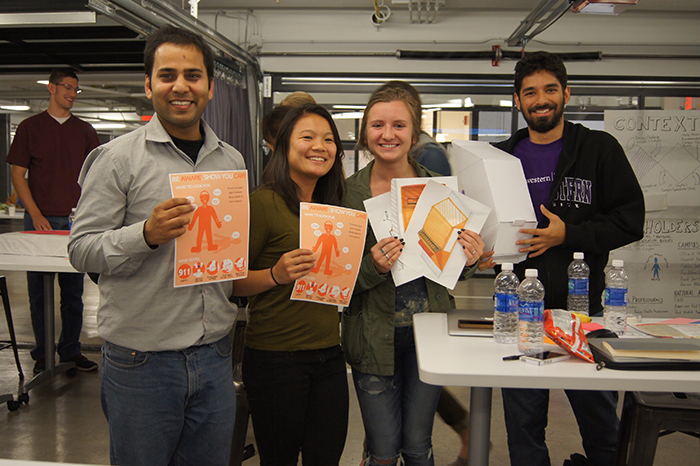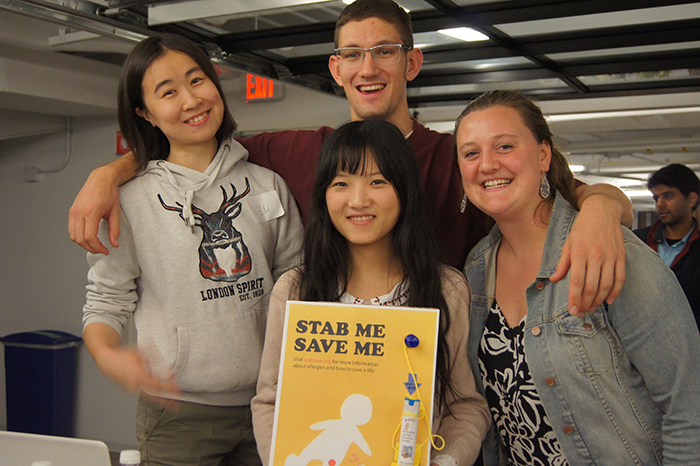EDI+IPD Design Challenge: Emergency Epinephrine Access
In the minutes between a call to 911 and arrival of EMS, there are a number of tools and technologies trained personnel or bystanders may be able to use to help save a life.
Graduate students from Northwestern's Master of Science in Engineering Design Innovation program (EDI) and University of Pennsylvania's Integrated Product Design program (IPD) gathered at Northwestern to explore the prompt: How might we increase awareness of and accessibility to life-saving medical devices and medications on campus?
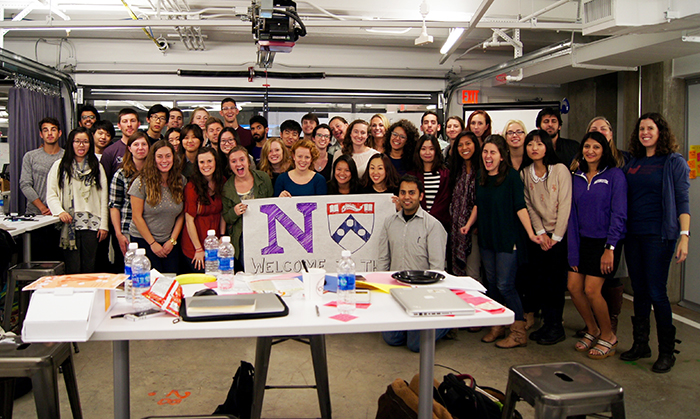
View More Design Challenge Photos
Kicking off the 24-hour design challenge Friday evening, Dr. Ruchi Gupta and Ashley Dyer from Northwestern Medicine introduced the topic of anaphylaxis and the potential life-saving drug epinephrine.
A synthetic form of adrenaline, epinephrine is the only known treatment for life-threatening allergic reactions known as anaphylaxis. Triggers for anaphylaxis include: food, medication, latex or insect venom. Dr. Gupta and Ms. Dyer described symptoms of anaphylaxis, demonstrated use of epinephrine auto-injectors and fielded the students’ informed and insightful questions.
To better understand the ecology of bystander responses to life-threatening situations, the students benchmarked training and technologies including: Red Watch Band, First Aid, CPR and AED access.
Saturday morning, the students visited campus dining halls, athletic facilities, and the student center where they used intercept interviews, in context observation, low-fidelity prototyping and participatory design methods to build and test prototypes of services, physical devices and educational tools for increasing awareness and accessibility to epinephrine.
Emergency physician Dr. Bonnie Salomon, Dr. Gupta and others familiar with anaphylaxis and epinephrine fielded an additional Q+A over lunch Saturday before the students ventured out to test their prototypes and prepare presentations.
At the end of the 24-hour period, each team presented research strategies, insights and low-fidelity prototypes to a panel including faculty, physicians and design innovation professionals.
Teams suggested a variety of products, services and digital interactions intended to raise awareness of potentially life-saving tools and medications. Insights they identified as central to increasing epinephrine awareness and access on college campuses include:
- Severe allergic reaction should be viewed as a public emergency, not solely an individual health issue
- Information about and access to emergency/stock epinephrine needs to be clear and consistent
- Epinephrine should be widely recognized as the first line of response to anaphylaxis
- The burden on individuals known to suffer from life-threatening allergies could be shared through increased community awareness
- Undiagnosed should not mean unprotected
Typically epinephrine is accessed by prescription only for individuals with a diagnosed allergy. However undiagnosed first-time reactions account for a percentage of anaphylactic reactions requiring emergency medical treatment. The School Access to Emergency Epinephrine Act allows K-12 schools across the country to maintain stock epinephrine in case of emergency. Stock epinephrine is prescribed by a physician to a school to use for individuals who are experiencing an allergic reaction, but who are not yet diagnosed. Only three states currently have similar legislation for colleges and universities to maintain and use stock epinephrine.
The students’ work and insights will be shared with administrators from Northwestern University and the University of Pennsylvania, the FARE College Food Allergy Program, epinephrine manufacturers, and may inform Dr. Gupta’s upcoming study on Campus Epinephrine Access.
Thank you to Dr. Gupta, Ms.Dyer, Dr. Salomon and the many health and safety-focused administrators, including the team at AccessibleNU, for educating the student teams, sharing insights and supporting the students’ exploration of this complex design challenge.
For more information about the design challenge or the EDI program, please contact Amy O'Keefe.
Please note: While the EDI and IPD students received information about multiple epinephrine auto-injectors, the EDI+IPD Design Challenge took place October 23-24, 2015, prior to the October 30th recall of ALL AUVI-Q epinephrine auto-injectors. Not all auto-injector devices pictured below are currently available to treat anaphylaxis.
